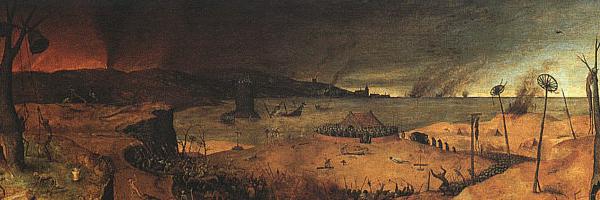
Home Page

Brief site descriptionThis site is a learning resource allowing exploration of T.S. Eliot's poem The Waste Land. Part of the site uses a framed presentation of the poem with hyperlinked notes, definitions, translations, cross references, texts of works alluded to, commentary, and questions to the reader. Another part of the site is unframed and describes how to use the site, has pages of links to other sites, contains a bibliography, holds essays and supplementary material, gives theme paper help and so on. Detailed site descriptionThe Exploring The Waste Land site consists of two sub-sites. One is a traditional non-framed site that consists of one window where following a link will cause the window display a new page of to show information. It is not an alternative to the framed sub-site, it presents different information. The second sub-site uses framed windows and hyperlinks to let you easily branch from one line of the poem to another. There are two frames which are always displayed and never change. One displays the full poem while another is provided for you to get help. In the other two frames or windows you can view definitions, translations, Eliot's notes, some of the original draft of the poem, some of the text that Eliot alludes to and my commentary. There are many pages allowing quick cross references (e.g., where are churches mentioned?) Instructions and hints are included (or will eventually be.) These can be accessed through the help frame. Exploring and The Waste Land
As T.S. Eliot so eloquently points out, the only way to learn about life (or about poetry) is by exploring. This website will help you explore his poem The Waste Land. This site will help you see the many allusions Eliot uses in the poem, it translates the non-English passages, and it shows lines from early drafts of The Waste Land before it was edited into its final form. What this site will not do is force upon you a particular reading of the poem, nor will it spoon-feed you "the meaning." The job of finding meaning is a difficult one, and here, as always, it remains the reward for the toil of the explorer. "... what branches grow out of this stony rubbish?"More than you might imagine. Since T. S. Eliot's The Waste Land was first published in 1922 readers have had difficulty following the poem (and thus, in many cases, considering it rubbish). Part of the difficulty in understanding The Waste Land is due to Eliot's use of allusion. By taking the view that allusion is actually a different form of hyperlinking I have translated The Waste Land into a hyperlinked presentation. I have also used hyperlinks to allow ease in cross-referencing the various lines of the poem. To see how many links and pages are used at this site visit the "Statistics about this site" web page. About the illustrationThe title illustration for the Exploring The Waste Land site is a detail from The Triumph of Death by Pieter Bruegel (the Elder). More information on Bruegel and his painting is available on this site's The Triumph of Death webpage. From that page you can link to images of the full painting. |
Site mapA link to the site map appears next to the wasteland illustration on most pages.
Supplementary materialsNo frames are used in the supplementary section of this site. This supplementary section contains pages that
How to reference or bookmark this site:To reference this site for a term paper or other work please use the information on the Referring to Exploring The Waste Land web page. Besides having author, title, URL and other information the page also has some cut-and-paste HTML for you. Create a link from one of your web pages to here using some cut-and-paste HTML markup from the Referring to Exploring The Waste Land page. Bookmark this site by using this page as the entry point. Among the reasons for using this page as the entry point:
|
This is the home page of the
Exploring The Waste Land
website.
The URL is:
http://world.std.com/~raparker/exploring/thewasteland/explore.html
This version of the page was generated on
Sunday, September 29, 2002
Copyright © 1997-2002 by Rickard A. Parker
(
raparker@theworld.com
)
[
Site Map
]
To home page of Exploring The Waste Land